
South Mumbai has many treasures especially if you love old world charm, history and lip smacking Indian and continental delicacies.
You can spend an evening taking a stroll around Marine Drive or just feel the breeze at Malabar hill. But Colaba is something else again. Here's why we love Colaba for being Colaba.
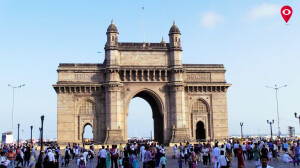
The Gateway of India : What's Big Ben to London or Eiffel Tower to Paris, Gateway of India is to Mumbai. The structure was erected to commemorate the landing of King George V and Queen Mary at Apollo Bunder, when they visited India in 1911. Standing tall at 26 metres, the Gateway welcomes hordes of tourists and visitors. Security has been tightened at the spot after the November 2008 terrorist attacks, and the interior arch of the Gateway is now cordoned off, but you can still enjoy the majesty of the basalt structure while indulging the services of the myriad professional photographers who will get you a Polaroid in minutes...a far more unique takeaway than that selfie you had been aiming for. You can also enjoy a ferry ride from here to nearby spots like Elephanta Caves , or just take a boat ride or click pics basking in the rays of the setting sun.
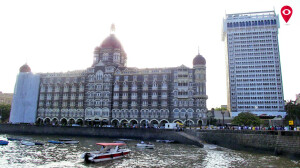
Taj Mahal Palace : Whether or not you can afford the luxuries promised within, the mesmerising facade of the Taj Mahal Palace hotel cannot but hold you in thrall. Built in 1903 by the Tatas, he hotel was the first in India to have: electricity, American fans, German elevators, Turkish baths and English butlers.
Later, it also had the city’s first licensed bar, India’s first all-day restaurant, and India’s first discotheque, Blow Up. The Taj charisma continues even after 114 years and the terrorist attack in 2008, in which several guests lost their lives and a chunk of the heritage structure was consumed in flames. It boasts 560 rooms and 44 suites.and a number of specialty cuisine restaurants. For those interested in trivia, in 1903, the hotel charged Rs 13 for rooms with fans and attached bathrooms, and Rs 20 with full board.
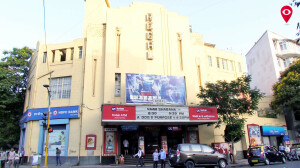
Regal theatre: One of the few remaining single screen theatres in the city, Regal cinema is an art deco movie theatre built by Framji Sidhwa in 1933, and stands proud at Colaba Causeway, the regular haunt of foreign tourists. It is still very popular among the lovers of single screen theatres. The first movie screened here was 'The Laurel and Hardy work for devil brothers'. According to the Limca Book of Records, it is the first air conditioned theatre of India!
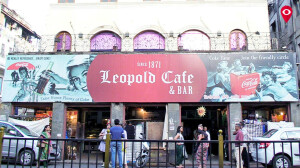
Cafe Leopold : Though this spot will forever be associated with the terror attacks on Mumbai in November 2008 and was dissected threadbare by the media, this cafe has always been popular among foreigners visiting Mumbai. Since 1871, this hip cafe/bar serves Continental, Chinese and Indian snacks, plus cocktails. For trivia lovers - Gregory David Roberts' 'Shantaram', which spoke of foreigner's journey through India, had Leopold at the centre of the plot.
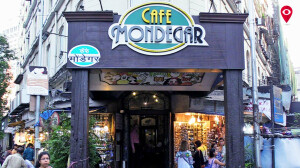
Cafe Mondegar : Situated just at the mouth of the Colaba Causeway trail and nestling close to Regal, Cafe Mondegar was the first restaurant in Mumbai to house a jukebox. Fifty years ago, it offered samosas and chai to its clientele, but all that's off the menu now. It's an ideal place to chill with beer and a book and friends with Bryan Adams crooning in the background. Of course, the walls sporting the distinctive art work of artist Mario Miranda adds the icing to this experience.
Cafe Royal: Just across the Regal cinema stands another restaurant, once visited and made forever famous by former US president Bill Clinton. It is famous for its lip smacking sizzlers and global fare. This one is just two years shy of a century.
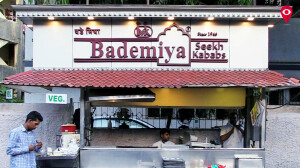
Bade Miyan : Established in 1946 by Mohammad Yaseen as a makeshift seekh kabab counter, it has made the rear entrance of the Taj Mahal Hotel as famous as its facade. Today, Bade Miyan has transformed into a chain of restaurants, but the real experience can only be had standing in the smelly street, doused in the fume emanating from the meats sizzling on the open ovens. Foodies swear by Miyan's baida rolls and kebabs and still prefer the “thela’ feel to the comfort of a restaurant . Just a stone's throw away from Bade Miyaan is Bagdaadi - another favourite of foodies. To get tipsy without burning a hole in your pocket, you can head into the adjoining lane for Gokul.
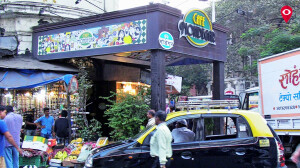
Colaba Causeway : Just taking a stroll along this causeway is so tempting. You can get the latest of apparel, chunky jewellery and gift articles and antiques, all at a steal. Stop by at the local Kamat's for a spot of chai or kaapi before resuming your shopping.
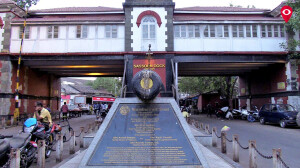
Sassoon dock : Situated just off Cuffe Parade in South Mumbai, this is one of the largest fish markets in the city. It was the first commercial wet dock in western India owned by the banking and mercantile company David Sassoon & Co and helped establish the cotton trade. Its neighbours are the Mumbai Port Trust Garden and Offices of Fisheries Department, and overlooks Oyster Rock.
Oyster Rock is an island in the Mumbai Harbour, Mumbai, India. It is heavily fortified, and owned by the Indian Navy. For a short while, the islet was used as a naval museum.
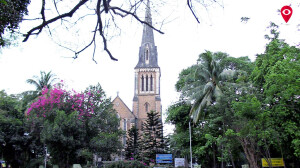
Afghan Church : Afghan Church is an Anglican church built by the British to comemmorate the martyrs of the first Aghan War of 1842. It is also known as The Church of St. John the Evangelist, Situated at the fag end of Navy Nagar, it is known for its wide Gothic arches and beautiful stained glass windows.
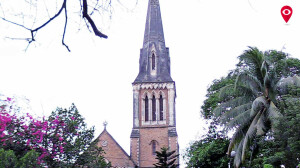
Besides this, The US club of Navy nagar is also a favourite spot of the elite with its sprawling golf course and banquet facilities. Eminent Mumbaikars like Ratan Tata reside in the vicinity and of course we love the way the firang crowd swarms this place that gives them a feel of home.





